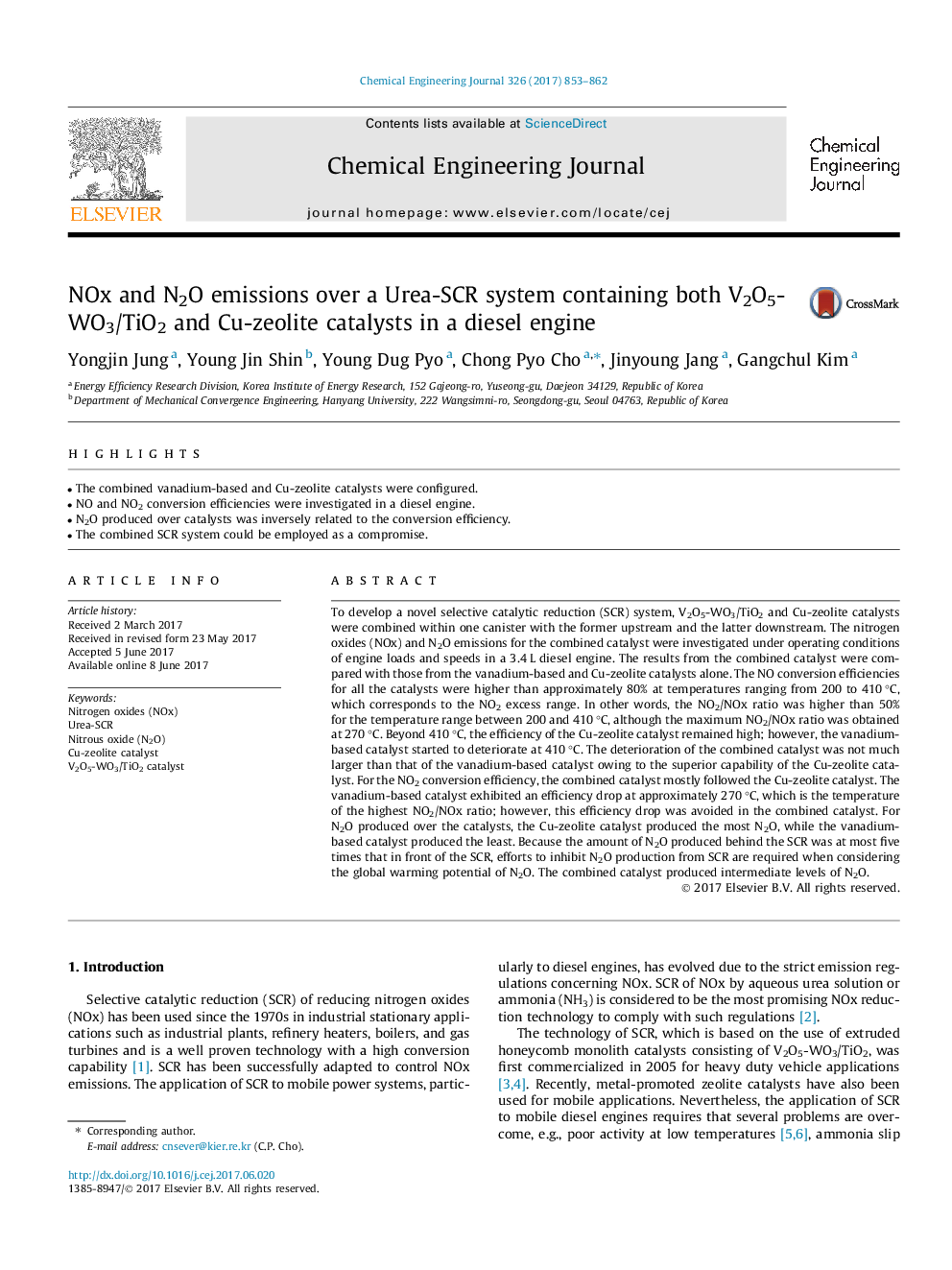| کد مقاله | کد نشریه | سال انتشار | مقاله انگلیسی | نسخه تمام متن |
|---|---|---|---|---|
| 6465518 | 1422952 | 2017 | 10 صفحه PDF | دانلود رایگان |

- The combined vanadium-based and Cu-zeolite catalysts were configured.
- NO and NO2 conversion efficiencies were investigated in a diesel engine.
- N2O produced over catalysts was inversely related to the conversion efficiency.
- The combined SCR system could be employed as a compromise.
To develop a novel selective catalytic reduction (SCR) system, V2O5-WO3/TiO2 and Cu-zeolite catalysts were combined within one canister with the former upstream and the latter downstream. The nitrogen oxides (NOx) and N2O emissions for the combined catalyst were investigated under operating conditions of engine loads and speeds in a 3.4 L diesel engine. The results from the combined catalyst were compared with those from the vanadium-based and Cu-zeolite catalysts alone. The NO conversion efficiencies for all the catalysts were higher than approximately 80% at temperatures ranging from 200 to 410 °C, which corresponds to the NO2 excess range. In other words, the NO2/NOx ratio was higher than 50% for the temperature range between 200 and 410 °C, although the maximum NO2/NOx ratio was obtained at 270 °C. Beyond 410 °C, the efficiency of the Cu-zeolite catalyst remained high; however, the vanadium-based catalyst started to deteriorate at 410 °C. The deterioration of the combined catalyst was not much larger than that of the vanadium-based catalyst owing to the superior capability of the Cu-zeolite catalyst. For the NO2 conversion efficiency, the combined catalyst mostly followed the Cu-zeolite catalyst. The vanadium-based catalyst exhibited an efficiency drop at approximately 270 °C, which is the temperature of the highest NO2/NOx ratio; however, this efficiency drop was avoided in the combined catalyst. For N2O produced over the catalysts, the Cu-zeolite catalyst produced the most N2O, while the vanadium-based catalyst produced the least. Because the amount of N2O produced behind the SCR was at most five times that in front of the SCR, efforts to inhibit N2O production from SCR are required when considering the global warming potential of N2O. The combined catalyst produced intermediate levels of N2O.
Journal: Chemical Engineering Journal - Volume 326, 15 October 2017, Pages 853-862